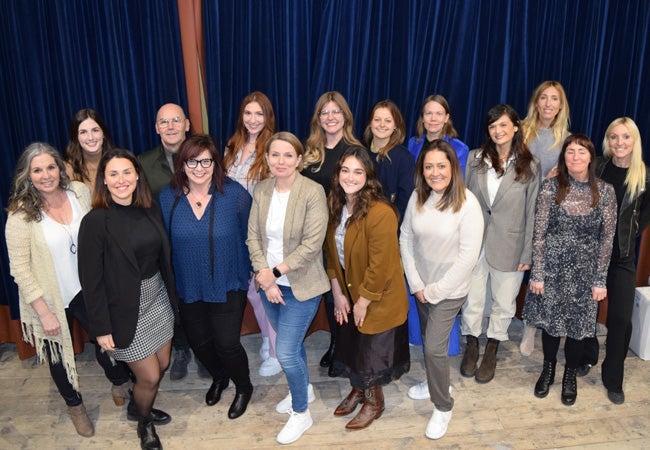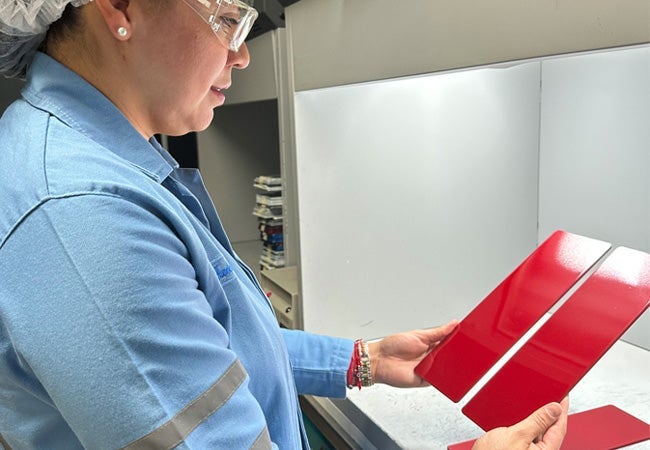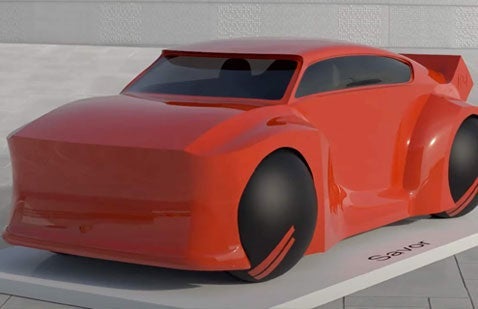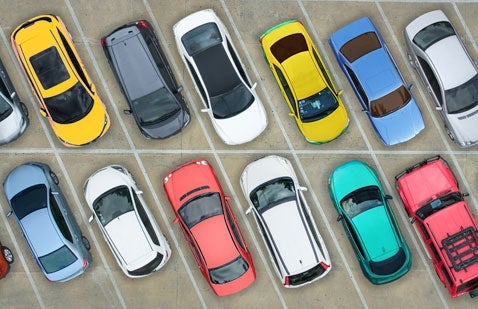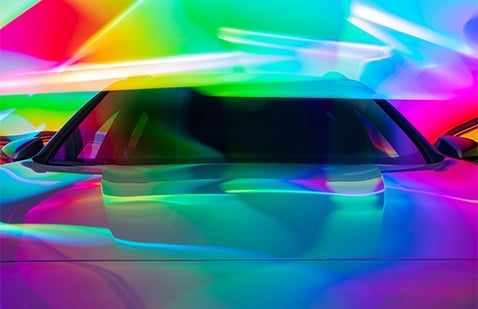History of Color

Cars have been part of our cultural expression since their inception. They are often symbols of how we see ourselves, humans, in relation to social events and technological progress. They are valuable machines, reliable protectors, providers of social standards, and dispensers of joy.
As we evolved, cars evolved and so did color
The car industry has been remarkably good at echoing, responding, or even predicting the social zeitgeist and our new needs and desires as society transformed during the past 135 years, with an ongoing relationship between culture, cars, and color.
PPG is proud to be a part of this history and we firmly believe that the best is yet to come.
With this timeline, we wanted to share a little of the history of the car and the ways that color has evolved.
The birth of the automobile
On January 29, 1886, Carl Benz applied for a patent for his “vehicle powered by a gas engine.” The patent – number 37435 – may be regarded as the “birth certificate” of the automobile.
While the first automobile were patented in the 1880’s, and within a decade they had become the playthings of the rich, but it was not until mass-production techniques were established, pioneered in the U.S. by Henry Ford in 1908, that motor cars became available for the masses.
Over the next 20 years, 15 million rolled off the assembly line making Ford the largest automobile producer in the world. By 1914 there were over a million cars in the U.S only.
Color in the early 1900’s
- Automobiles were invented and perfected in Germany and France (Mercedes).
- Henry Ford innovates mass-production techniques;
- Cars were basically motorized carriages and painting methods were derived from the oil-based coating formulations used for traditional horse drawn carriages.
- Original paint dry time took several weeks.
- Eventually the color would fade to yellow and would need to be repainted.
Color in the 1920s
- In 1926, Ford introduces the brown Model T.
- Later, the stock market crash and depression leads to automotive colors getting dimmer with more somber greens and grays.
- A neutral colors phase arises, giving rise to the popularity of black, white and silver/gray
Color in the 1930s
- As the industry started slowly growing again, other colors started being introduced in the market, such as maroon, navy, tan, dark green.
- The first metallic paints appear, which were first made from actual fish scales and reserved only for the very rich.
- Eventually, paint companies started using aluminum flakes.
Color in the 1940s
- In the first part of the decade, OEMs funneled their resources to the military during WWII.
- Later, a vaster option of colors for car buyers emerged.
- For the first time, buyers could find cars with several different shades of blue, green, or red. Colors also became brighter and less associated with darker, black-like colors.
Color in the 1950s
- After WWII, automotive design was a reflection of adventure, success, a post war feeling of euphoria, and for the first time, fashion.
- People started showing off their cars and their personalized colors. Brighter colors started to be introduced, such as flashy yellow, blue… Some even started two-tone car bodies. Fashion was in full effect.
- Daimler-Benz reaches 100k+ cars manufactured in a single year; in 1956 expanding to 26 single colors and 23 two-tone paint schemes offered.
Color in the 1960s
- Solid colors represented the 50s & 60s with high-chromatic and deep colors achieved with heavy metals
- Two-tone stylings emerged
Color in the 1970s
- A color palette of rusts, golds, greens and browns emerges.
- But rather than taking their hue from the natural world, these colors were all a bit off, more man made, with just a hint of gray.
- Manufacturers responded to the public interest in the environment with earthy palettes of browns, rusts, yellows and greens
Color in the 1980s
- PPG metallic coatings emerged in late 80s
- Pearl effect introduced in early 80s, Micas in late 80s
- Shift from mono-coat to 2-coat system occurs
Color in the 1990s
- In the mid to late 90’s green cars captured over 20% of North America’s automotive color popularity.
- During this time automotive companies had beautiful rich greens like, Emerald Green, Hunter Green and Deep Jewel Green.
Color in the 2000s
- Big revolutions in Automotive Color Styling emerged in the 2000’s
- Introduction of glass flakes in mid-00s
- Two-tones re-invented
- Matte finishes in 2010s
- Tech and e-mobility developments influence color & styling
- In the self-driving realm, the LIDAR (light sensors) begin to affect infrastructure

